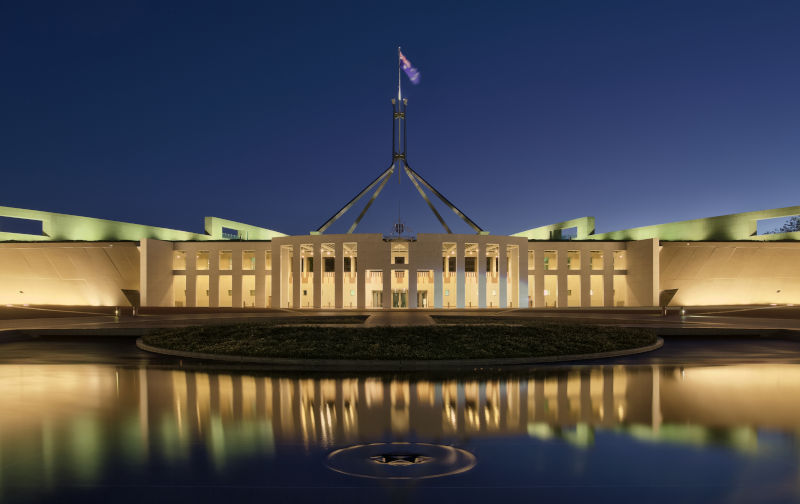The Prime Minister elect made a couple of important comments on Saturday night that indicate the early steps he plans to take to begin governing.
Anthony Albanese will see the Governor-General today and arrange the appointments of not only himself as Prime Minister but also Penny Wong as Minister for Foreign Affairs and Trade so the two of them can go to the Quad meeting in Tokyo. Also, Richard Marles (presumably as Defence Minister) so he can act as PM in Albanese’s absence, Jim Chalmers as Treasurer and Katy Gallagher as Finance Minister so the latter pair can begin work on the economy and the budget.
He also mentioned that he had already had discussions with the Public Service, presumably during the caretaker period. I assume this was to receive early advice on the Administrative Arrangements Order should Labor win office.
The AAO is the first step towards settling the governing arrangements. Albanese has frequently said he wishes to have a cabinet government operating along the lines of the Hawke and Keating Governments. That is radically different to the arrangements under Morrison and augurs well for a better relationship with the public service.
Since early 2020, Morrison operated with about 24 cabinet ministers but only 13 portfolio departments. Accordingly, many departments have had multiple ministers in cabinet. Moreover, a number of these ministers had responsibilities in more than one portfolio; assistant ministers and parliamentary secretaries similarly often had responsibilities across portfolios. This arrangement not only made cabinet too big but also undermined any opportunity for alignment between cabinet and the public service which was meant to be advising on policy and implementing the Government’s programs.
In sharp contrast, the Hawke and Keating Governments (and the Howard Government) had more manageable cabinets and clear alignment between politics and administration. With few exceptions, every portfolio had one minister in cabinet and that minister had responsibility for the functions of one (portfolio) department. Most portfolio ministers had at least one assistant minister and one parliamentary secretary to focus on particular functions within the portfolio; they did not have responsibilities beyond the portfolio.
This not only allowed better alignment between ministers and the public service, but also allowed cabinet to devolve more responsibilities (eg allocation of some resources within the portfolio) to each portfolio ‘team’ of ministers, reducing the load on cabinet.
Returning to such a model would support some reduction in the size of cabinet (say to around 18) while adding to the number of departments (say to 16 or 17, not including Veterans Affairs which has traditionally been within the Defence portfolio).
The more obvious of current portfolios that might be restructured under such a scenario are:
- Agriculture, Water and Environment, with an Albanese Government likely to give higher priority to the environment and climate change;
- Infrastructure, Transport, Regional Development and Communications, where options include giving housing and regional development a priority via a separate department;
- Social Services, where Labor’s policies about community services including child care also suggest the need for a different department from social security (though I would be strongly inclined to keep aged care with health).
As well, Albanese may well want to have an Aboriginal Affairs Minister in cabinet with its own department, demonstrating his commitment to the Uluru Statement by having a ‘voice’ within his cabinet and a structure committed to engagement with communities across the country.
In addition, one can only hope for a major rethink of the Home Affairs portfolio. Consistent with a stronger focus on integrity, key security functions should be returned to the Attorney-General’s portfolio. And ‘immigration’ should once again be in the title as the portfolio’s primary responsibility, shifting the emphasis from ‘border force’ to enhancing the settlement and contribution migrants and refugees make to our economy and society.
While emphasising these ‘rational’ arguments, I appreciate the PM will need also to manage the politics involved including within his party. Accordingly, the AAO cannot be settled until he knows who has been elected, who his colleagues determine will be in the ministry and after he has spoken to the ministers.
That also means it is most unlikely the PM will settle secretary appointments other than for PM&C until he has determined the AAO (at time of writing, a new PM&C Secretary has not yet been appointed but I expect it will in the next day). Any other appointment would best be considered within the context of the overall movements the AAO would presage.
The sort of AAO outlined above would create at least three new secretary positions. There is also at least one other vacancy with Rosemary Huxtable’s retirement. In addition, the PM can look to some reshuffling of current appointees. There is therefore no need for a ‘night of the long knives’ in order to change the face of the APS leadership. Indeed, there is every opportunity to put firmly into place a very different, professional and constructive relationship between ministers and the public service that preserves public service neutrality and abides by the merit principle, so long as Albanese and his ministers (and ministerial) staff have the right respectful attitude.
There are some very good people within the APS who should be considered for secretary appointments. There is also room for some new blood, particularly from the States. And if Albanese establishes a new that would offer the opportunity for a most important new leader. Aboriginal Affairs Department
Then there is the big task of a revitalised APS leadership to rebuild APS capability and its reputation.
Andrew Podger is honorary Professor of Public Policy at The Australian National University, and former Australian Public Service Commissioner and Secretary of the Departments of Health and Aged Care, Housing and Regional Development, and Administrative Services. He was national president of the Institute of Public Administration Australia from 2004 to 2010, and a member of the foundation board of the Australian and New Zealand School of Government. He was made an Officer of the Order of Australia (AO) in 2004, and has written extensively on social policy including health financing, retirement incomes and tax and social security, and on public administration.

